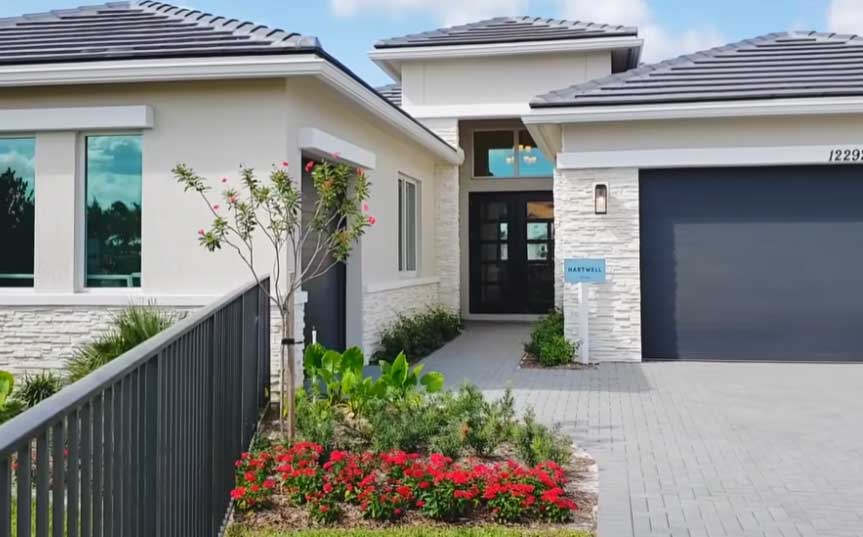The average cost of home insurance coverage in Massachusetts is $1,548, which is hundreds below the national average of $1,951. There are effective tips you can take advantage of to get cheap home insurance in Massachusetts, while still maintaining solid coverage.

For most homeowners, their house is their biggest investment and this is why it’s so important to protect it properly. Buying a comprehensive home insurance policy in Massachusetts is a smart move because it will protect your home from most disasters.
This article will go over your home insurance coverage options in Massachusetts, including money-saving tips that could keep more of your hard-earned money in your pocket. If you want to get a quote, just fill out a free application online and you will be matched with multiple home insurance providers in Massachusetts.
Home Insurance Coverage Types
- Dwelling Coverage: This core component covers the physical structure of your home, including the roof, walls, windows, and built-in appliances. Dwelling coverage typically accounts for the largest portion of your premium and should be equal to your home’s full replacement cost, not its market value. Coverage limits usually range from $100,000 to $500,000 or more for higher-value properties.
- Other Structures Coverage: Don’t overlook protection for detached structures on your property like garages, sheds, fences, and gazebos. This coverage is generally 10% of your dwelling limit but can be increased if needed.
- Personal Property Coverage: Your home insurance policy covers more than just the house itself. Personal property coverage reimburses you for lost, damaged, or stolen belongings like furniture, clothing, electronics, and other valuables. Coverage is typically 50-70% of your dwelling limit but can be adjusted based on your contents’ value.
- Loss of Use Coverage: If your home is rendered uninhabitable due to a covered peril like a fire or storm damage, loss of use coverage pays for temporary living expenses like hotel stays, restaurant meals, and other associated costs while repairs are made.
- Personal Liability: This shields your assets if someone is injured on your property and decides to sue. It covers legal fees, medical bills, and settlements/judgments up to your policy’s liability limit, typically $100,000 to $500,000.
- Medical Payments to Others: Regardless of liability, this covers minor injuries to guests with limits like $1,000 or $5,000 for reasonable medical treatment to avoid lengthy liability battles over small claims.
Policy Considerations You Should Be Aware Of
- Deductibles: Like auto policies, home insurance deductibles let you share some risk and reduce premiums. Common deductibles are $500, $1,000, or $2,500, with higher options for further savings on costly homes.
- Actual Cash Value vs. Replacement Cost: Actual cash value (ACV) policies factor in depreciation on belonging claims. Replacement cost values (RCV) policies pay the full cost of brand-new equivalents without deducting for depreciation, providing better coverage.
- Endorsements: Basic home insurance has limitations, so many owners add endorsements to fill coverage gaps. Examples include scheduled personal property for valuables, water backup for sump pump failures, earthquake coverage, and more.
Massachusetts is Prone To Natural Disasters

High-Risk Coastal Regions: With over 1,500 miles of coastline along the Atlantic Ocean, many of Massachusetts’ most desirable and densely populated areas like Cape Cod, the Islands, Boston, and the North Shore face heightened risks from tropical storms and hurricanes. In recent years, major events like Hurricanes Bob (1991), Irene (2011), and Sandy (2012) caused billions in damages.
As a result, insurers have grown increasingly wary of insuring coastal properties and now factor geography into their underwriting process more stringently. Living near the shore can easily double or triple your annual premium. In some beach towns, availability remains limited with only a few still offering coastal home insurance. Many owners must now turn to relatively pricey Fair Access to Insurance Requirements (FAIR) Plan policies designed for high-risk properties.
Harsh New England Winters: The winters in Massachusetts are notoriously brutal, subjecting homes to the wear and tear of heavy snowfall, ice, frozen pipes, and nor’easters. Unsurprisingly, insurers adjust their rates accordingly based on regional winter storm trends.
Those living in areas that get pounded annually like the Berkshires can expect higher premiums compared to relatively calmer locales east of Worcester. Still, every homeowner must be aware of risks like roof collapses from ice dams, burst pipes, and the potential for flooding from rapid snowmelts. Adequate insurance and proper winterization efforts are musts.
Densely Populated Regions: In and around Boston, as well as the state’s other major metro regions like Worcester and Springfield, higher premiums often reflect dense population centers with elevated risks for hazards like fires that can quickly spread to multiple homes. Higher chances for crime, liability incidents, and general claims frequency also get factored into these urban/suburban rates.
Massachusetts Homeowners Policy Add-Ons To Consider

Even a comprehensive home insurance policy has its limitations, which is why many Massachusetts homeowners should explore supplemental coverage endorsements. Some worth considering include:
- Water Backup Coverage: For as little as $50/year, this pays for damages from backed-up drains, sewers, or failed sump pumps which can cause costly basement flooding.
- Service Line Coverage: This covers repair/replacement of external utility lines like water, power, heating, etc. which can be very expensive if they rupture or require upgrades.
- Scheduled Personal Property: If you own expensive valuables like jewelry, art, musical instruments, or collectibles, adding them to your policy ensures they’re fully insured.
- Identity Theft Coverage: More policies now include basic ID theft monitoring and expense reimbursement, but higher limits are available if needed.
By taking a customized approach and adding applicable endorsements, you can fill any potential coverage gaps in your home insurance policy.
So how can Massachusetts homeowners find the right home insurance at the best possible rates? Here are some final expert tips:
How To Get Cheap Home Insurance in Massachusetts
Whether it’s installing smoke detectors, upgraded electrical systems, burglary alarms, or removing potential hazards like trampolines or tree branches near your home – taking proactive safety measures will make your property more attractive to insurers at lower prices.
Research the Insurer’s Track Record
Don’t simply judge an insurer by premium prices alone. Investigate their policyholder satisfaction levels related to their claims handling process, customer service, and overall reputation through independent rating agencies and consumer reports. A great claims experience is invaluable.
Look Into Specialized Companies
In major markets like Boston, it’s worth exploring local and regional home insurance companies that truly understand the unique climate and coverage needs of Massachusetts homeowners. Their specialization and regional focus sometimes allows them to undercut national competitors.
Bundle Policies for Bigger Discounts
While most insurers offer bundling discounts for combining home and auto policies, check if they extend even bigger savings for packaging umbrella liability, recreational vehicles, boats, and other specialty lines together.
Seek Out Group Programs and Discounts
From employers and alumni associations to credit unions, professional organizations, and more – seeing if you qualify for any group home insurance programs can unlock discounted policies you can’t find elsewhere.
Take Advantage of Cyber Offerings
In today’s digital age, many providers offer smartphone apps, cyber policy management, paperless billing incentives, and online tracking tools. Embracing these tech-driven offerings occasionally leads to discounts for going remote.
Ask About Advanced Pricing Models
Some of the most innovative home insurance companies now utilize advanced data-driven pricing models that holistically analyze each property’s specific risk factors rather than assigning flat prices to entire rating territories. This new breed of “Insuretech” start-ups could offer better prices customized for lower-risk homeowners.
Shop Around
With so many insurers in the crowded Massachusetts market, shopping around for home insurance quotes from multiple companies is crucial to uncover the best rates tailored to your home.
Improve Home Security
Investments in burglar alarms, fire sprinklers, deadbolts, and other security features make your home less risky to insure and often qualify for discounts up to 20%.
Maintain Good Credit
Like many forms of insurance, home insurers factor credit into their underwriting and pricing. Those with excellent credit scores tend to pay lower premiums.
Avoid Small Claims
While home insurance is meant to be used, frequently filing small claims under $1,000 can lead to rate increases and even policy non-renewals down the road.
Risk Factors That Increase Massachusetts Home Insurance Premiums
- Natural Disaster Risks: Living in high-risk areas prone to hurricanes, blizzards, wildfires, or other disasters will significantly raise home insurance premiums or require separate deductibles/coverages.
- Home Construction: Older homes and those made from riskier construction materials like wood tend to have higher rates compared to newer homes built with sturdy brick, concrete, and fire-resistant materials.
- Claim History: Just like maintaining a clean driving record keeps auto premiums down, avoiding frequent home insurance claims over a prolonged period will prevent rates from escalating.
- Dog Breed: Certain dog breeds classified as “aggressive” like Pit Bulls or Rottweilers may trigger higher liability premiums due to the increased risk of bite incidents.
- Home Businesses: If you operate any type of visible business from your home like a daycare, contracting company, or e-commerce venture, insurers will likely charge extra premiums.
Tips On Buying a Massachusetts Home Insurance Policy
- Determine Correct Replacement Cost for Dwelling Coverage: Estimating rebuild costs is challenging, but insuring your home for too little puts you at risk of being underinsured if tragedy strikes. Regularly consult building contractors and use online calculators to ensure your coverage reflects true replacement costs.
- Inventory Personal Belongings for Contents Coverage: Creating a thorough home inventory with photos, videos, receipts, and serial numbers can streamline the contents claims process and ensure you get reimbursed the proper replacement amounts for your valued possessions if they’re damaged or stolen.
- Understand Different Policy Types (HO-3, HO-5, etc.): Not all home insurance policies offer identical protection. HO-3 is the most common policy covering all perils unless specifically excluded. HO-5 comprehensive policies are also popular and ideal for newer, well-constructed homes. HO-1 and HO-2 offer more basic, named-peril coverage.
- Research Insurer Ratings and Financial Stability: You’ll want to choose a reputable, financially stable insurer that will actually be around to pay claims when you need them most. Review independent ratings from agencies like A.M. Best, S&P, and J.D. Power.
- Missing Discount Opportunities: During the quoting process, make sure you’re taking advantage of all available discounts the insurer offers, from policy bundling to security features, age, and claims-free histories.
The Final Word on Cheap Massachusetts Home Insurance
Protecting your home with the best coverage should be carefully considered. By evaluating your specific needs and risks, shopping around for the lowest quotes from multiple insurers, taking advantage of multiple discounts, and improving home security, getting cheap homeowners insurance in Massachusetts is possible. To compare free home insurance quotes online, enter your zip code and fill out a quick application. Save more money today on cheap Massachusetts home insurance.


